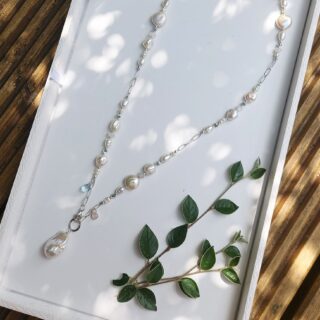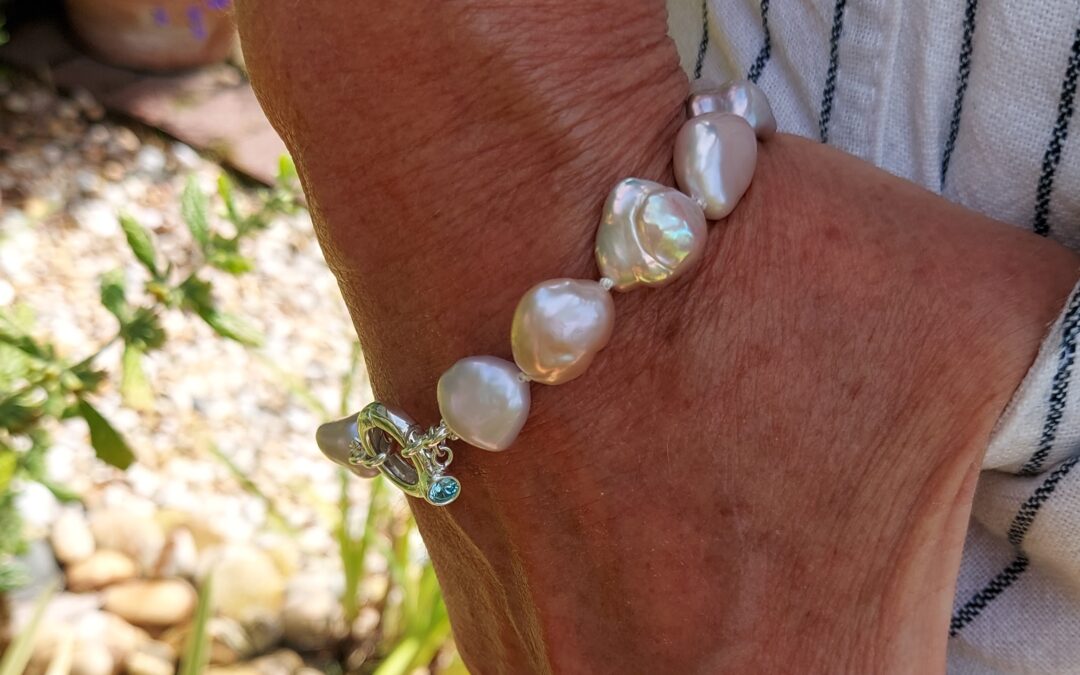Imitation pearls are everywhere, and why not. Made from glass, crystal or plastic, they look nice in jewellery, they’re inexpensive, and if they get damaged, it’s not a huge loss. However, some of the imitations are so good, it is difficult to tell, for example, if it is a vintage piece of jewellery made with real pearls.
One way to find out whether the pearls are real is to rub them gently together. Imitation pearls, such as Swarovski crystal pearls, will slip and slide freely against each other, whereas real pearls will feel gritty.
Another way is to look at the drill holes. The drill holes in real pearls are often smaller than the holes in imitation pearls, and you may notice flakes of the coating peeling from around the holes of the fake ones.
If the pearls are round, generally speaking real ones will not be identical to each other, as with real pearls there are slight nuances in shape, surface and colour. If someone claims that a strand of round pearls is real when you are making a purchase, Akoya pearls for example, consider the price they are being sold at, as real ones will be much more expensive than imitation.
If you’re still unsure, you can always take them to a jeweller who will be able to give you a definitive answer, but most of all, if you love the jewellery, just have lots of enjoyment wearing it!
Get in contact today to find out more about Aura’s baroque pearls.


